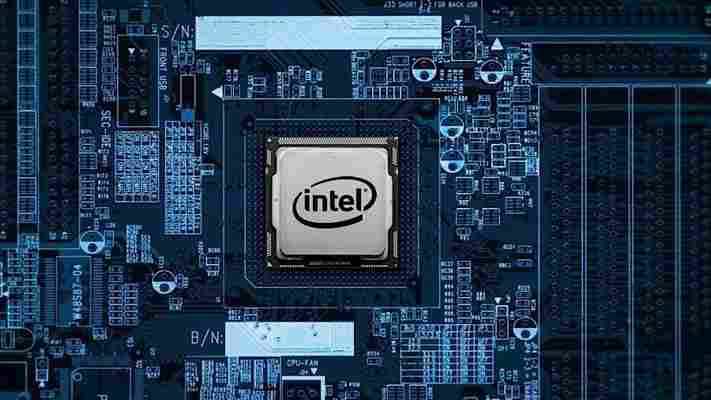Dust mites and sweat: what builds up on a mattress when it isn’t cleaned
When was the last time you showed your mattress some TLC? And what builds up on that soft, pillowy surface when it isn’t cleaned regularly? Dust mites, sweat and pet dander are just a few of the things you can expect. Even if you have recently invested in the best mattress for your sleep, keeping it fresh from the start will help it last longer (and save you money).
As Yordan Yordanov, a mattress cleaner from Fantastic Services , tells us: “While most people tend to agree that buying a quality mattress is essential for a good night's sleep, keeping it clean is just as important in order to prevent allergies and health-related issues from arising, as well as to have a high-quality sleep.
“Some people almost never clean their mattress until it rips open, which is the wrong way to look at it,” Yordanov argues. “We spend approximately a third of our lives sleeping, so it’s right to ensure we have as much high-quality sleep as possible. Regular cleaning and maintenance are key - there is simply no other way around it.”
Our feature on how to clean a mattress talks you through the process, but for now, here’s a look at what could build up on your mattress if you don’t clean it regularly. And to get an idea of just how well you’ll be sleeping on your soon-to-be fresh and clean mattress, take a look at our guide to the best sleep trackers .
1. Layers of dust
Just like dust resides on our lamp shades, mirrors and pretty much every other surface in the house – the pesky allergen can also settle on our mattress. Yordanov explains: “Dust build-up is common on most mattresses, as dust is composed of dead skin cells, hair, dead insect parts, sand, and anything else that could be brought from the outdoors, through your open windows or on the shoes you bring indoors.
“To reduce overall dust, you should clean and dust your entire home regularly, as well as invest in an air purifier, preferably with High Efficiency Particulate Air filters.”

2. Dead skin and body fluids
From sweat to saliva and urine to faeces, if not cleaned regularly a whole cocktail of body fluids will embed themselves into your mattress. Gary Farron, from professional cleaners Silent Mites , tells us: “Stains will gradually build up over time, from various body fluids, sweat and saliva. Also dead skin cells will collect as we can shed anywhere between 15 million to half a billion dead skin cells every day. This will make it perfect for bacteria, which will multiply.”
3. Dust mites
This leads on nicely from the point above. Unfortunately, once our skin has been shed, it makes for the perfect feeding playground for dust mites. Farron adds: “Further down inside the mattress you can expect to find dust mites – microscopic relatives of the spider, feeding on our dead flakes of skin.
“It is estimated that a 10 year old mattress will contain more than 10lb of dead flakes of skin which is a food source for millions upon millions of dust mites, whose waste is a very potent protein that can trigger many allergies such as asthma, eczema, rhinitis, itchy skin, itchy red eyes and sneezing.
“A good mattress protector will help prevent stains and offer a guard against the build up of bacteria, fungi and dust mites. However these will just take the brunt of the problems so it is important to wash bed sheets, pillows , pillow cases and protectors regularly. Airing the mattress when you wake up will also help. Letting natural sunlight get to the bed and allowing the humidity to dry out of the mattress will all play a role in keeping the bed fresher.”

4. Pet dander
At TechRadar we love our pets beyond measure, but if you let your much-loved furry friend have 40 winks in bed with you, as snuggly and comforting as that is, you could be opening up the door to more than just a warm hug and a wet, whiskery kiss.
Melissa Homer, Chief Cleaning Officer at MaidPro , explains: “Mattresses are home to remnants of whatever is present on them regularly, including our food, our pets, and us. If your furry friends join you in bed, their dander is also adding to the party, as are the stray bits of popcorn from the movie you watched in bed the other night.”
5. Mold
If you’ve ever had mold in your home – whether it’s your bathroom or bedroom – you’ll know how much of a pain it can be. The spores thrive in warm and damp conditions, and unfortunately for us, they can get into your mattress because they’re airbourne.
Yordanov adds: “Mold is another major hazard that might develop in high-humidity areas, especially if there's poor sunlight and ventilation. It's also very difficult to remove if left untreated for prolonged periods, as it gets inside the mattress, which renders it dangerous to human health. Mold needs to be treated immediately because it has many adverse health effects, it grows fast and is especially dangerous to people with asthma.”
This advice goes for your mattress topper or pad too, so make sure you also keep those cleaned on a regular basis. It’s especially important to quickly deal with any mold you spot on a bedding accessory before it spreads to your mattress.
Read more:
This article is part of TechRadar's Sleep Awareness Week 2022 (running from Sunday 13 to Saturday 19 March), a week-long celebration of all things slumber. We'll be bringing you proven techniques and tips to help you sleep better, and have rounded-up all the top-rated tech to transform your sleep.
Your new BMW might not come with Android Auto and Apple CarPlay
Volkswagen isn’t the only automotive manufacturer feeling the component shortage strain in 2022.
According to a report from Automotive News Europe (via 9to5 Google ), BMW is temporarily shipping a selection of new vehicles without support for Android Auto or Apple CarPlay after changing its chip supplier.
The German brand says its new components are not currently compatible with either infotainment system, though it has clarified that affected models will receive an over-the-air software update correcting the issue by "the end of June at the latest."
While BMW hasn’t specified which of its vehicle ranges have been affected by the supplier switch, 9to5Google notes that any model with “6P1” in its production code won’t come equipped with Android Auto or Apple CarPlay.
Automotive News Europe also claims that all affected vehicles were manufactured in the first four months of 2022, with destinations including the US, UK, Italy, Spain and France. By the sounds of things, then, the issue applies to various different models across the globe.

Naturally, BMW customers have a right to be frustrated that their vehicles may not be arriving – or haven’t arrived – fully stocked with features they’ve already paid for, but it’s worth remembering why the decision has been taken by BMW in the first instance.
Unlike Volkswagen, whose ability to deliver electric vehicles on time has been thrown into chaos by the ongoing chip shortage , BMW has opted to switch component suppliers entirely in a bid to mitigate delays as much as possible. Evidently, that switch has come at the expense of immediate support for Android Auto or Apple CarPlay software, but at least the brand has pledged to rectify the issue with imminent over-the-air updates.
Drivers may also find the trade-off easier to stomach than BMW’s previous mitigation strategy – in November 2021, the company shipped a handful of new vehicles without touchscreens and other assistance features. Affected customers were given $500-worth of credit for the inconvenience.
Unfortunately, though, a lack of Android Auto and Apple CarPlay support isn’t likely to be the end of the story for BMW and other auto manufacturers. According to Intel CEO Pat Gelsinger, the global component shortage – an issue that continues to affect everything from PS5 stock to the availability of printer ink cartridges – could last until 2024.
Intel Raptor Lake rumors and what we want to see
Intel Raptor Lake is set to be the follow-up to Alder Lake , the architecture behind the Intel Core i9-12900K . And given that it’s following such a successful launch, all eyes will be on Intel to see if it can keep up the momentum – especially now that the Apple M1 Ultra is in play.
Intel hasn’t let too much leak about Raptor Lake, but we’ve heard a few little details that offer enough to get excited about. And the new chips may not be so far off, so we won’t be left waiting all that long to see what improvements Intel has in store for its next iteration of its big.LITTLE processor architecture.
Of course, we won’t really know anything about what Intel Raptor Lake processors will look like until Intel is ready to lift the veil. Until then, though, we’ll collect all the latest news and information and collect it here. So, be sure to keep this page bookmarked if you want to keep your eyes out for the next best processor .
Cut to the Chase
Intel Raptor Lake release date
There have been some hints that Raptor Lake could arrive as soon as Q3 2022 , particularly a cryptic tweet from leaker @momomo_us.
Intel has a roughly annual cadence with the release of Intel Core processor generations, and Alder Lake debuted in November of 2021. This would make a Q3 launch seem a bit on the early side. Then again, Alder Lake did come out just 6 months after Rocket Lake in early 2021.
So, it’s totally possible that Intel will still hit an October launch date. And we’ve even seen rumors that Intel’s next processors could hit the market as early as August 2022. Either way, it doesn’t look like we’ll be waiting long for Intel’s next processors.

Intel Raptor Lake price
We haven’t heard much with regard to pricing for Raptor Lake, but we also haven’t seen any monumental shifts in the pricing of CPUs (setting aside the mark-ups they’ve received from resellers when stock was scarce).
With that in mind, we’d expect Intel Raptor Lake processors to continue Alder Lake’s pricing scheme, or something similar.. For example, the Intel Core i3-12100 sells for $139 in the US and its flagship Core i9-12900K goes for $619 with additional models filling in at various prices between those two.
However, the way that Intel pricing works is that it sets a suggested price and then just lets retailers and partners price the processors, which is the price you’ll actually see on store shelves. Ultimately, it’ll likely depend on what the PC components market looks like when the Intel Core i9-13900K (assuming that’s what it’ll be called) comes out. If things keep going like they are now, Intel’s next processors could be a bit more expensive.

Intel Raptor Lake specs
Raptor Lake should just be an iterative update to Alder Lake, continuing to come built on the Intel 7 (10nm Enhanced SuperFin) architecture, so we don’t expect any monumental changes between the two generations. But with some IPC (instructions per clock) gains, improved efficiency allowing for higher clock speeds, more cores on board, and other tweaks here and there, we could still be seeing chips that offer a healthy upgrade.
We have heard some rumors that suggest Intel’s planning Raptor Lake chips with up to 24 cores . That mystery chip has leaked multiple times and is expected to be the Intel Core i9-13900K. Remember that Intel is using a big.LITTLE architecture now, though, so those 24 cores are believed to be divided up into eight performance cores with hyperthreading and 16 efficiency cores with a single thread each, netting the chip a total of 32 threads.
The Intel Core i9-12900 offers a similar setup but with just eight efficiency cores, so this Core i9-13900K wouldn’t be bringing a huge leap in performance cores. While the performance cores are believe to have a new design (“Raptor Cove”), the efficiency cores are expected to be the same seen in Alder Lake (“Gracemont”)
AMD still has an advantage when it comes to efficiency, as even Intel’s Alder Lake chips are more power-hungry than Zen 3 processors. Though Alder Lake made improvements in this area, it may be Raptor Lake that pushes things further forward. The new architecture is rumored to decrease the power consumption of the CPU by 20% to 25% by using a DLVR (digital linear voltage regulator) that would lower voltage used by the CPU. That improved efficiency could turn around and deliver a 7% increase in performance.
Intel may also be planning some big cache bumps for its next generation of processors. A leak from @OneRaichu on Twitter suggested there would be some Raptor Lake chips boasting a 68MB of total L2 and L3 cache. That’d be great news for gamers, as we’ve seen AMD make heavy use of large cache allocations on its Ryzen processors to deliver consistent performance. Alder Lake chips are already quite impressive, yet top out at 44MB of cache, so an increase of over 50% is nothing to overlook.
As far as platform goes, we’ve heard the Raptor Lake processors will continue using the LGA1700 socket introduced with Alder Lake, and filings with the SATA-IO industry standards committee suggest Raptor Lake chips will even be compatible with the 600-series chipsets on the motherboards made for Alder Lake, Tom’s Hardware reports . Alder Lake introduced support for PCIe 5.0 and DDR5 memory while maintaining compatibility with DDR4. It’s unlikely Raptor Lake could leap even further ahead to PCIe 6.0 as few products have even begun to take advantage of PCIe 4.0. We can expect some increases in the DDR5 and LPDDR5 speeds supported by Rocket Lake, though, and tech analyst Moore’s Law Is Dead suggests Raptor Lake will maintain backward compatibility with DDR4, which should help weather DDR5’s painfully high prices .